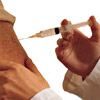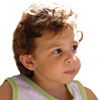WA parents putting kids at risk
Western Australians are at the bottom of the table in immunisation rates, putting those who are unable to be vaccinated at risk. According to recently released Australian Childhood Immunisation Register (ACIR) statistics, WA lags in all age groups surveyed.
The State places last for children between 12 and 15 months, with only 90 per cent fully immunised—these immunisations include diphtheria, hepatitis B, polio and pertussis (whooping cough).
WA rated second-last for ages 24 to 27 months, with the Northern Territory having lowest—measels, mumps and rubella are among the dangers for this group.
The five to five years and three months category also placed last with only 85.7 per cent fully immunised.
These low rates put unvaccinated children at risk, and raise exposure dangers for individuals with immunity issues, including people for whom vaccination is not effective and those immunocompromised from illnesses—including many forms of cancer.
Commonly referred to as ‘herd immunity’, recommended minimum community vaccination levels differ by disease.
They can range from 85 per cent for diphtheria to 92 per cent for whooping cough—infection risks reach a tipping point when numbers fall below these levels.
Reasons suggested for this situation include parents not fully understanding the importance of kids getting protected.
WA GP Michael Hoar says, “they’re all really important…INFANRIX hexa contains vaccines for tetanus, which is usually fatal if contracted, Haemophilus influenza type b (Hib), which causes epiglottitis, also potentially fatal, hepatitis B, pertussis, diptheria and poliomyelitis (polio)—all in one needle.
“Sure it sounds like a lot for kids’ immune systems, but when you look at the diseases you are protecting them against, the decision is easy for me.”
Parents may also be avoiding immunisations due to previous adverse reactions.
“Rotavirus used to cause horrible outbreaks of gastro in kids, causing a lot of suffering and hospitalisation,” says Dr Hoar. “But this has plummeted in recent years.
“Reduced influenza rates stem from the fact that WA kids had the most adverse reactions to CSL’s Fluvax, which was a triple-valent vaccine containing H1N1. However after a thorough investigation, the authorities decided to stop Fluvax in under five-year-olds’s and keep Influvac and Vaxigrip going.”
In 2010, 1435 cases of whooping cough were reported in WA, more than three times the number of cases in 2008.
The immunisation warning comes after one adult returned from the Philippines with the disease in June 2011, and an unvaccinated child was infected in Thailand then passed the infection to his two younger unvaccinated siblings.
Naturally occurring measles has been eliminated from WA for over a decade but occasional cases and small outbreaks occur associated with tourists or WA residents returning from overseas.
Written by Rob Payne, courtesy ScienceNetwork WA
(Source: Science Network Western Australia: Australian Childhood Immunisation Register (ACIR))
More information
 | For more information on immunisation, including the childhood immunisation scedule, types of vaccines, preconception screening, as well as some useful videos, see Immunisation. |
 | For more information on developmental milestones in childhood, including recommended health check-ups and childhood immunisation, see Child Developmental Milestones. |
Dates
Tags
Created by:

 Login
Login














